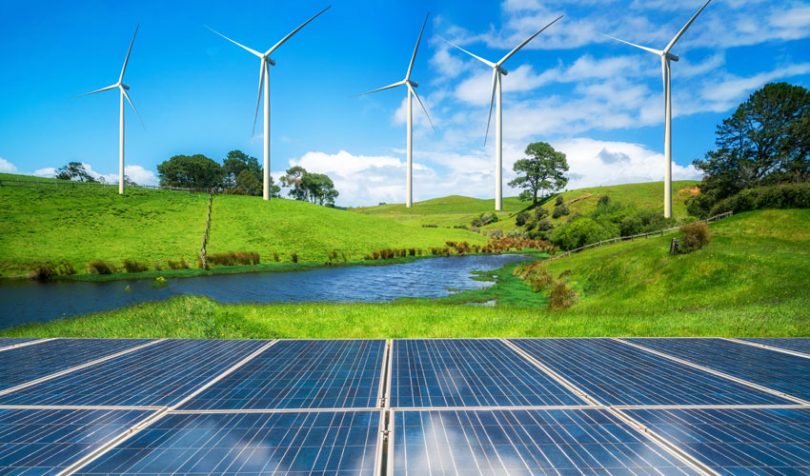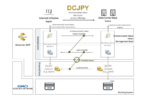Today the Energy Web Foundation (EWF) announced its public blockchain is live. The group boasts 100 affiliate members and is expecting to see 17 dApps go live on the network in the coming weeks.
The foundation has too many big name members to mention. Global brands such as Total, Shell, GE and Siemens are on board. But most are regional electricity generators or grids. From the U.S. there’s Duke Energy and PG&E, but they also have major brands from Asia and many of Europe’s biggest providers. Numerous startups are also participating.
This combination of members mirrors the two EWF founders. It’s a marriage of think tank Rocky Mountain Institute with its Rolodex of big corporate players, and software startup Grid Singularity.
The target market is substantial. In 2018, new investment in the sector was $1.85 trillion according to the International Energy Authority. Of that, $775 billion went into the power sector and more than $300 billion into renewable energy.
While there are many industry sectors currently in flux as a result of technology changes, the energy sector is shifting from regional monopolies and oligopolies to distributed supplies. The fusion with distributed ledgers and a public blockchain, in particular, seems like a no brainer.
“According to industry forecasts, by 2030 consumers would invest more money in distribution-edge devices [such as] solar PV [photovoltaic], batteries, charging stations, electric vehicles, smart controls, than electric utilities would invest in power generation and electricity grids. This is a massive and unprecedented shift,” said Hervé Touati, CEO of EWF.
In the past Belgian grid operator Elia has focused on the high-voltage transmission grid with a small number of power plants. Now it’s looking at leveraging EWF’s blockchain to expand its reach. “To ensure a successful energy transition, blockchain is one of the required tools,” said Kris Laermans project manager at Elia Group. “We demonstrated with our last blockchain project [with EWF] that the technology will help to lower the entry barriers for prosumers and consumers in the flexibility market and reduce the administrative costs with settlement automation.”
EWF’s Chief Commercial Officer Jesse Morris explained the gap that blockchain fills. “We really don’t have a digital infrastructure capable of orchestrating and coordinating millions, potentially billions of internet-connected devices. That’s whether we’re talking about electric vehicles, whether we’re talking about batteries, whether we’re talking about power plants. Most of the grid is pretty analog.”
He continued: “Blockchains would appear to be able to solve some of the challenges that the energy sector is facing in this. We don’t have digital identities for customers in most cases. We don’t have digital identities for assets. We don’t have a way, for example, for devices like a Tesla powerwall to conduct financial settlement at extremely low cost and in an automated way.”
What’s it for?
That’s the big picture, but what is Energy Web being used for specifically? The first wave of dApps fall into three groups. Firstly, certification so electricity consumers can confirm their electricity source is from renewable energy. We’ve previously written about several EWF projects in this area, including separate projects from Spain’s Iberdrola and Acciona.
Secondly, there are dApps around electric vehicle charging and making the process simpler. The third and more complicated area is demand response. To smooth supply and demand during off-peak periods, renewable energy can be stored in batteries and customer assets can transact with other machines or the grid operator.
A novel public blockchain
A public blockchain is a more logical choice because of the large number of prosumer energy providers that EWF aims to connect. Given EWF is all about green energy, it couldn’t run an energy wasteful Proof of Work blockchain like the public Ethereum and Bitcoin chains. Instead, it’s using Proof of Authority (PoA), which means initially ten approved companies run validator nodes. The companies are a mix of utilities, grid operators, and blockchain developers. By using PoA, EWF can enable low-cost transactions and greater scalability.
So it’s a semi-permissioned blockchain in that the validators are approved, but anyone can participate as a user.
But public blockchains represent unique regulatory and operational challenges for corporates. Here’s a quote from an unnamed member. “We as a corporate, cannot control everything that’s happening on a node. Because again, it’s a decentralized network and there are things happening on top of that network.” That means that the corporate can’t host that node inside its IT perimeter. But they’re also not allowed to host things outside of its IT perimeter. Likely these sorts of challenges will take time to address and sandboxes will help.
Since it’s a public blockchain, the validators need to be compensated, so there’s a token. EWF didn’t run an ICO. However, it has received contributions for its blockchain work, for helping in building dApps, and for community building efforts. All the organizations that made contributions received tokens.
As an enterprise-grade public blockchain, privacy is an issue. It uses the popular solution of storing data off-chain with hashes (digital fingerprints) on-chain. Going forward, it’s also exploring Parity’s secret store and some zero-knowledge proof solutions.
For enterprises, one of the big questions with public blockchains is governance which EWF plans to evolve. Initially, there are the ten validator nodes. Any code changes will be recommended by EWF and the node operators can give feedback. So at first, EWF is similar to a steward.
In a second phase, when there are more nodes, the validators would vote on changes. But there’s a more novel medium-term plan to give dApp developers a big say. The more gas a dApp uses or rather, the more popular it is, the bigger the vote. But there will be limits to prevent popular apps from dominating the network governance.
If the energy web network went down, would the lights go out? EWF’s Morris responded that a decentralized network could improve cybersecurity. But the reality is these initial dApps are more focused on traceability. It’s not providing a new digital infrastructure to automate the grid. Morris concluded: “Our affiliates, I imagine, would be quite careful before they fully digitized those functions, whether they’re using a public blockchain, a private blockchain or another digital solution.”







